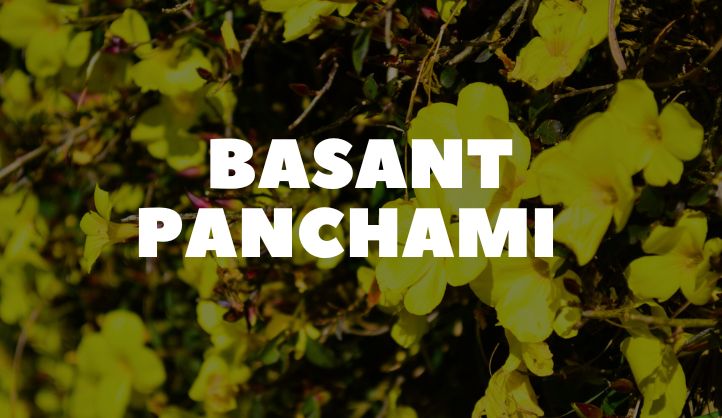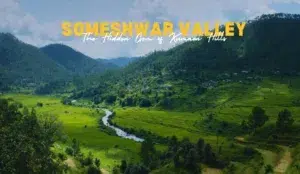Nestled in the majestic Himalayas, Uttarakhand comes alive with vibrant hues and joyous festivities during Basant Panchami. Marking the arrival of spring, this festival transcends religious boundaries, becoming a celebration of nature’s rejuvenation and the promise of a bountiful harvest. This blog delves into the essence of Basant Panchami in Uttarakhand, exploring its traditions, rituals, and the unique cultural tapestry it weaves.
A Spring Symphony – The Significance of Basant Panchami
Basant Panchami, also known as Sri Panchami in some regions, falls on the fifty day of the bright fortnight (Shukla Paksha) in the Hindu month of Magha, which typically coincides with January or February. Uttarakhand, with its distinct seasons, embraces Basant Panchami as a welcome respite from the harsh winter. The festival signifies the end of the dormant period and the awakening of nature. Fields awaken with a verdant tapestry, and trees burst forth with colorful blossoms. This vibrant transformation resonates with the human spirit, igniting a sense of optimism and renewal.
A Celebration of Knowledge and Art – The Worship of Saraswati
Basant Panchami holds immense significance for Hindus as it is dedicated to Saraswati, the goddess of knowledge, music, arts, and learning. On this auspicious day, devotees across Uttarakhand rise early and adorn themselves in yellow attire, symbolizing the brilliance of spring and the power of knowledge. Homes and educational institutions are adorned with yellow marigolds (calendula) and mango leaves, creating a visually stunning display.
Elaborate pujas (worship rituals) are performed in Saraswati temples, with devotees offering books, musical instruments, and yellow sweets like besan laddoo. Students, in particular, seek blessings for academic success and artistic pursuits. Many schools and institutions organize Saraswati Vandana (devotional prayers) and cultural programs, showcasing the talents of young minds.
A Fusion of Traditions – Regional Variations in Uttarakhand
Uttarakhand’s rich cultural tapestry is reflected in the diverse ways Basant Panchami is celebrated across different regions.
Garhwal Region
In the Garhwal region, the festival holds special significance for the farming community. A traditional ceremony called “Hal Jot” (bullock ploughing) is observed. Here, the womenfolk take the lead, carrying a basket filled with puja materials and seeds to the fields. They perform a puja seeking blessings for a bountiful harvest. This ritual marks the commencement of the sowing season, signifying the deep connection between nature’s rhythm and human life.
Kumaon Region
In the Kumaon region, the festival is marked by kite flying competitions. Vibrant kites, adorned with intricate designs, fill the skies, symbolizing the soaring spirit of spring. Children and adults alike take part in this playful competition, creating a joyous atmosphere. Additionally, a special dish called “Baingan Chutney” (brinjal chutney) is prepared and offered during pujas.
Beyond Religion – A Celebration for All
Basant Panchami transcends religious boundaries in Uttarakhand. It is a time for families and communities to come together and celebrate the beauty of spring. Social gatherings are organized, where traditional delicacies like “Kheer” (rice pudding) and “Gujiya” (fried sweet dumplings) are shared. People dress in vibrant colors, exchange greetings, and participate in cultural programs. The festive spirit fills the air, fostering a sense of camaraderie and shared joy.
A Feast for the Senses – Culinary Delights of Basant Panchami
Food plays a significant role in any Indian festival, and Basant Panchami is no exception. Uttarakhand’s culinary scene comes alive with a burst of flavors during this time.
Yellow Delights
Yellow being the color of the festival, many dishes incorporate yellow ingredients like turmeric, saffron, and gram flour (besan). “Basant ki Barfi” (a sweet fudge) and “Puran Poli” (flatbread stuffed with a sweet lentil filling) are popular choices.
Seasonal Specialties
Spring brings with it a bounty of fresh produce. Uttarakhand’s cuisine reflects this with dishes like “Aloo Tamatar ki Sabzi” (potato and tomato curry) and “Bhang ki Chutney” (cannabis chutney, a local delicacy with a subtle psychoactive effect).
Sweet Indulgences
No festival is complete without sweets, and Basant Panchami features a variety of them. “Besan laddoo” (gram flour fudge), “Til ke Laddu” (sesame seed fudge), and “Gajar ka Halwa” (carrot pudding) are some of the popular choices.
Basant Panchami in Uttarakhand’s Tourist Destinations
Basant Panchami adds a special charm to Uttarakhand’s tourist destinations, transforming them into vibrant canvases. Here’s a glimpse into how some popular locations celebrate:
Haridwar
This holy town along the Ganges River witnesses a surge in devotees during Basant Panchami. The iconic Mansa Devi Temple and Chandi Devi Temple are adorned with yellow marigolds, creating a stunning visual spectacle. Special pujas are held, and devotional songs fill the air, creating a spiritual ambiance.
Rishikesh
Rishikesh, the “Yoga Capital of the World” embraces the spirit of renewal during Basant Panchami. Yoga centers organize special meditation sessions and workshops focused on inner growth and creativity, aligning with the essence of the festival. The banks of the Ganges become a canvas for kite-flying competitions, adding a playful touch to the festivities.
Nainital
Nainital is a picturesque hill station that transforms into a riot of colors during Basant Panchami. The Naini Lake reflects the vibrant hues of the surrounding landscape, while boats adorned with flowers add to the charm. Cultural programs showcasing traditional music and dance performances are held, offering a glimpse into the region’s rich heritage.
Jim Corbett National Park
Even the wildlife sanctuary comes alive during Basant Panchami. The vibrant spring foliage provides a stunning backdrop for safaris, and the increased bird activity adds to the natural symphony. Nature enthusiasts can witness the diverse flora and fauna awakening from their winter slumber.
Sustainable Practices During Basant Panchami
Basant Panchami serves as a reminder of our connection with nature. Here are some ways to celebrate in a sustainable manner:
-
Natural Dyes: Opt for kites and decorations made with natural dyes instead of synthetic ones.
-
Seed Paper: Use seed paper for writing greetings or creating small crafts. When planted, these papers sprout into tiny plants, promoting ecological balance.
-
Edible Colors: Use edible colors made from saffron, turmeric, and beetroot for preparing sweets.
-
Clay Idols: Instead of plastic idols of Saraswati, choose eco-friendly alternatives made from clay, which can be immersed in water bodies without causing harm.
Some other festivals celebrated in Uttarakhand
Uttarakhand, nestled in the Himalayas, boasts a rich cultural heritage reflected in its vibrant festivals. Here’s a glimpse into some other festivals celebrated throughout the year:
Kumbh Mela
Kumbh Mela is a mega-pilgrimage, held every 12 years at Haridwar, Rishikesh, Ujjain, and Nashik, and is the world’s largest religious gathering. Devotees take holy dips in the Ganges, seeking spiritual purification.
Ganga Dussehra
Ganga Dussehra is celebrated ten days after Dussehra, this festival honors the mighty Ganges River. Devotees offer prayers, float lamps (diyas) on the river, and participate in aarti (ritual of light) ceremonies.
Bissu
Celebrated by the Kumaoni community in the month of April, Bissu is a harvest festival marking the victory of good over evil. People wear new clothes, prepare special delicacies, and visit temples to seek blessings for a prosperous year.
Harela and Bhitauli
Observed thrice a year, these twin festivals mark the changing seasons. Harela signifies the beginning of a new season, with people planting trees and worshipping nature. Bhitauli follows Harela, where families gift money or clothes to young daughters.
Nandadevi Mela
Held at various locations across Uttarakhand, this grand fair honors Nanda Devi, the patron goddess of the Garhwal region. The week-long festivities include cultural performances, religious processions, and a vibrant display of local crafts and products.
Conclusion
Basant Panchami in Uttarakhand is a vibrant tapestry woven with faith, tradition, and the joy of spring. It is a time for renewal, a celebration of knowledge and creativity, and a reminder of our deep connection with nature. As the vibrant hues of spring paint the landscape, Basant Panchami fills the hearts of Uttarakhandis with optimism and hope for a bountiful year ahead.
FAQs on Basant Panchami in Uttarakhand
1. When is Basant Panchami celebrated in Uttarakhand?
Basant Panchami falls on the fifth day of the bright fortnight (Shukla Paksha) in the Hindu month of Magha, which typically coincides with January or February.
2. What is the significance of the color yellow in Basant Panchami celebrations?
Yellow symbolizes the brilliance of spring, knowledge, and prosperity. People wear yellow clothes, decorate their homes with yellow flowers, and prepare yellow sweets during the festival.
3. How is Basant Panchami celebrated differently in Garhwal and Kumaon regions?
In Garhwal, the “Hal Jot” ceremony marks the beginning of the sowing season. In Kumaon, kite flying competitions and “Baingan Chutney” are prominent features of the festival.
4. What are some popular food items associated with Basant Panchami in Uttarakhand?
Yellow delicacies like “Basant ki Barfi” and “Puran Poli,” seasonal dishes like “Aloo Tamatar ki Sabzi,” and sweet treats like “Besan laddoo” and “Gajar ka Halwa” are popular choices.
5. How can I experience Basant Panchami in Uttarakhand as a tourist?
Visit popular destinations like Haridwar, Rishikesh, Nainital, or Jim Corbett National Park during Basant Panchami. Participate in cultural programs, witness the beauty of spring, and enjoy the festive spirit.





